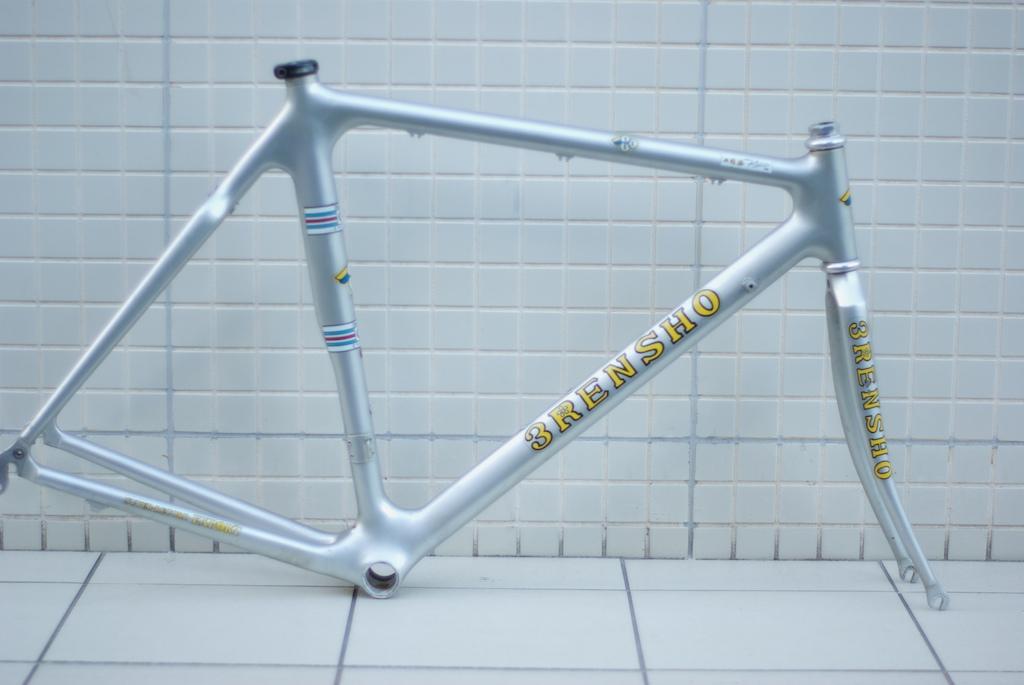
Photo courtesy the Vintage 3Rensho Love blog
In my last two articles I showed how 3Rensho, a brand synonymous with the finest handmade steel bicycles, added aluminum bicycles to their lineup thanks to third-party manufacturers like SR and Yamakuni. Now I’d like to take a deep dive into an even more esoteric corner of the 3Rensho story: carbon bikes. This time around I am relying more than ever on 3Rensho’s catalogs, as it’s been extremely hard for me to find examples of these bikes in the “real world” that have been photographed and shared online. I’ve identified three models so far: the SR Litage with carbon tubes, and two monocoque designs from Aegis/BIK and Araya. Read on to learn more!

Photo courtesy Shinkai Cycle
First up is a familiar face: a carbon-tubed SR Litage. Given that the Litage was offered in carbon, it makes sense that it would be available from 3Rensho. However, I cannot find a mention of it in any of my catalogs. The one above was restored by Shinkai Cycle, which gives the weight of the complete bike as 8.56kg. More photos and information is available on their blog. I also found a frameset on Facebook, missing most of its decals:
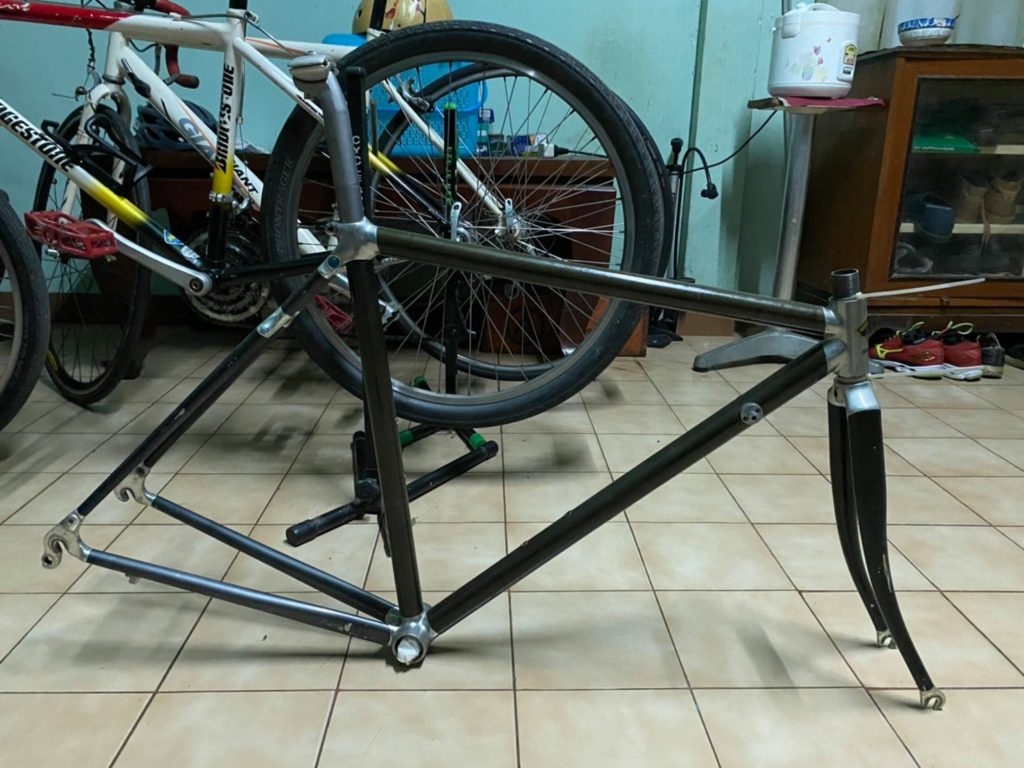
The carbon Litage was cool, but it feels firmly stuck in the 1980s with its screwed-and-glued approach to carbon. It’s time to get weird: how about an authentic “Made in the USA” 3Rensho?
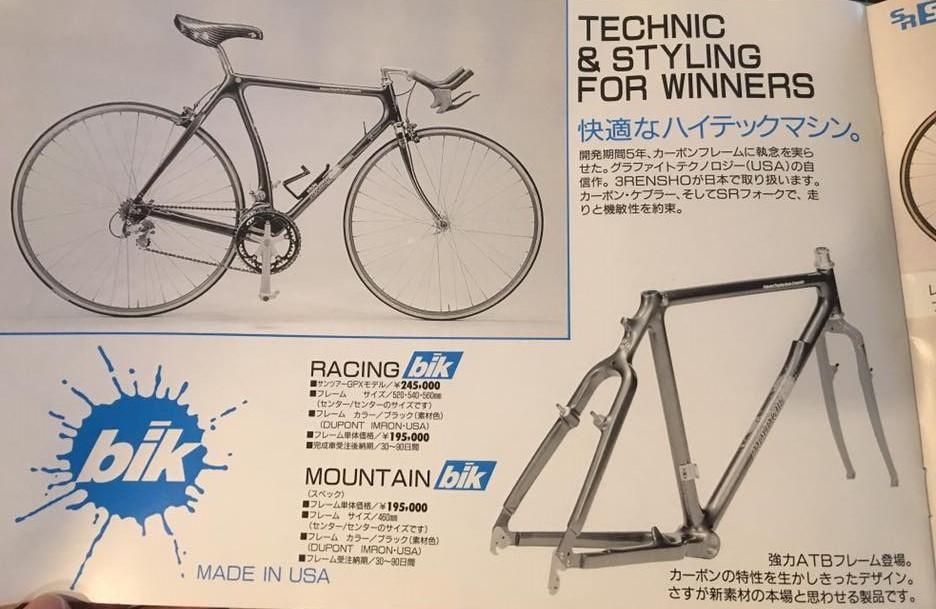
A Comfortable Hi-Tech Machine: After 5 years of development, the obsession with the carbon frame has paid off. A proud product of Graphite Technology (USA). 3RENSHO handles in Japan. The carbon Kevlar and SR fork promise speed and agility.
(translated from the 3Rensho catalog)
Graphite Technology, Inc. was founded in 1971 by the Duplessis brothers of Van Buren, Maine. They were initially focused on producing graphite tennis racquets, and by 1973 they had a contract with the Rossignol brand. In the 1980s, they were contracted by Trek to produce carbon fiber tubing for the Trek 2500 bicycle.
In 1986, with the support of Trek, they made the first all carbon monocoque frame, using a bladder-molding process they developed in-house. In 1989, they decided to produce their own carbon frames under the BIK brand. It seems to be about this time that 3Rensho became a customer. The forks, however, are from the SR Litage, a decision by BIK and not specific to 3Rensho. I don’t have a photo of a BIK/ Aegis frame with 3Rensho branding, but here is what the frame looked like (note the Litage fork):
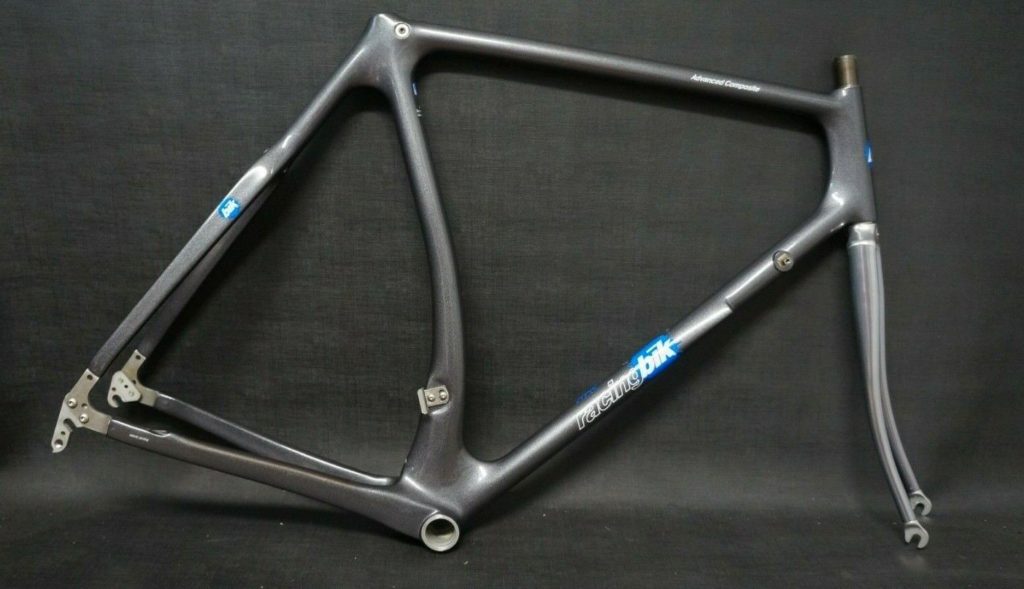
From an article in the November 1990 edition of Mountain Bike Action magazine:
Due to its own patented graphite Kevlar epoxy composite construction, the Bik has a very formal look. The joints are smooth as silk and the molded-in cable guides and shark fin help give the bike a sculpted, one-piece appearance. Each Bik frame is made in America and uses a unique process of wrapping anisotropic plies of graphite and Kevlar fibers continuously in the individual directions of frame stress. Other carbon frames mold two halves together, while the Bik frames are seamless.
In 1992, the French company Didier Louis purchased Graphite Technologies and continued to sell frames for the next two years under the “Racing BIK” and “Mountain BIK” brand. The Graphite Technologies team split around this time, with a group of employees breaking off to the West Coast to start their own business. This became Kestrel, another well-known player in the early monocoque carbon bicycle world. In 1993 Graphite Technologies launched the Aegis bicycle brand, and by 1995 the business had been sold back to an American investor. Despite being an early entrant, they lost ground to competitors in the late 1990s as they struggled to scale their hand-built operation to meet production quotas. The Aegis brand would endure until 2010. For more information, check out this history of the brand by the Bangor Daily News and this thread on Retrobike.co.uk.
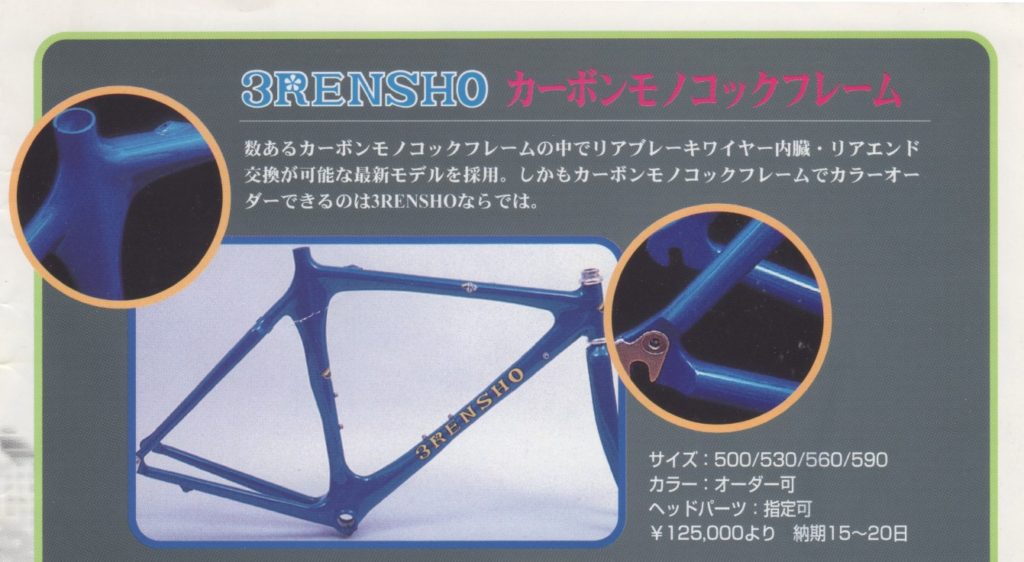
At some point in the late 1990s, 3Rensho changed suppliers for their carbon frames, as evidenced by the above photo from a 1998/1999-era catalog. 3Rensho had changed a lot, with their flagship bicycle now called the “Zero”. The name came from the tubing (Dedaccai Zero) and not the famous Japanese fighter airplane of World War 2. At this point, frame builder Masahiko Makino was handling the custom frames and the president of the company was Haruhiko Tanihara. I struggled to figure out who was manufacturing these frames for 3Rensho, and my best guess is Araya. The Araya Excella Ex-Worx pictured in their 1994 catalog is a dead-ringer:
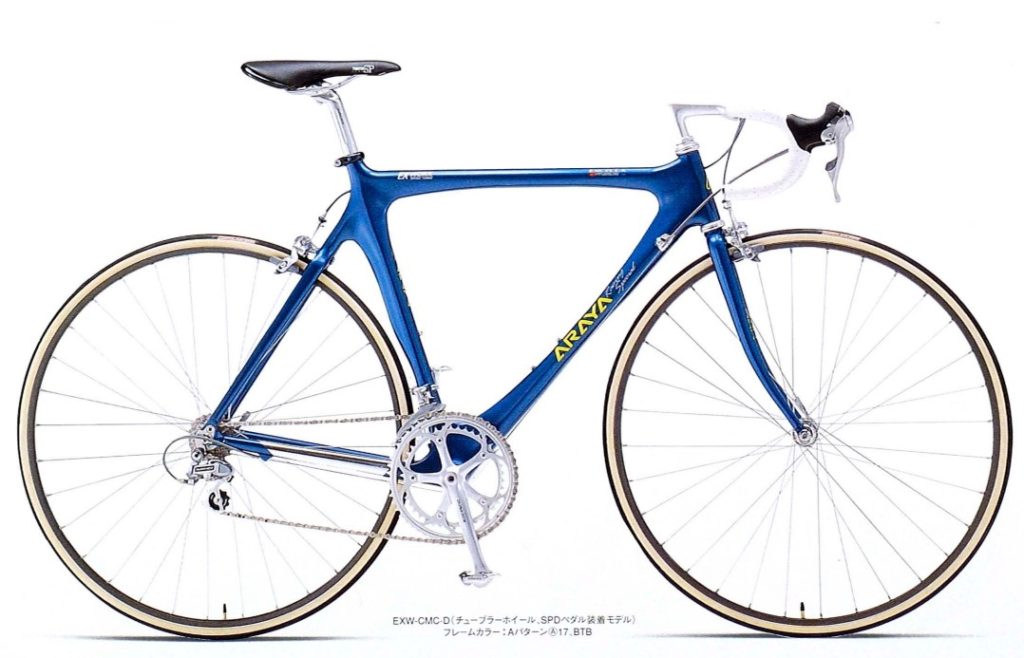
The above frame matches the 3Rensho catalog, but the actual two photographic examples I have of this frame do not have internally-routed brakes. Instead, the rear brake is routed along the underside of the top-tube, and the yellow example below has a front fork that is closer to the Look KG286. However, the 286 also has internally-routed brakes, so it’s not a match, either.
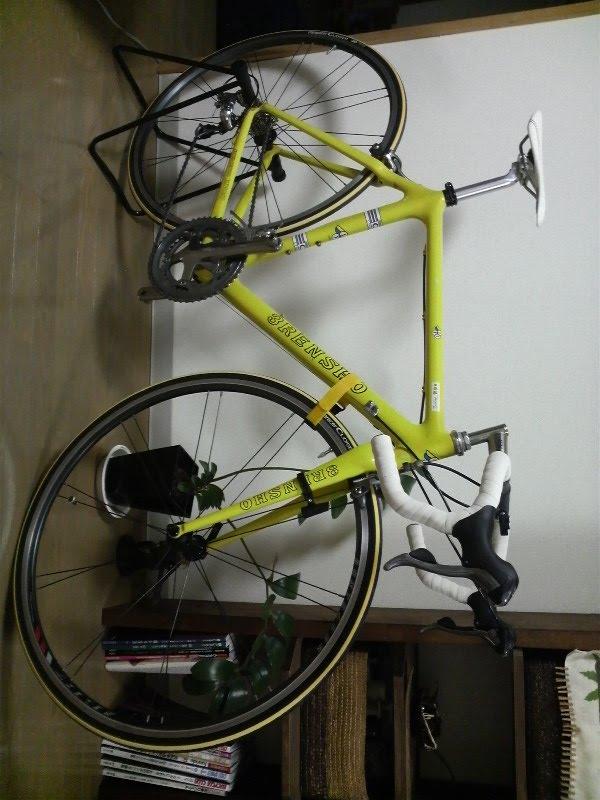
For now, this article will end on a mystery. There might be other 3Rensho carbon bikes out there, such as the monocoque mountain bike as shown in their catalog (made by BIK) or even an entirely different model that might explain the difference between the white and yellow examples I’ve found and the catalog photos of the Araya frame. I will update this article if and when I dig up more information. Please leave a comment if you have any information to share!

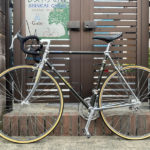

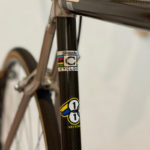
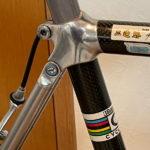
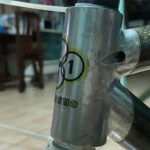
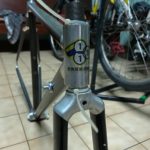
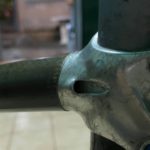
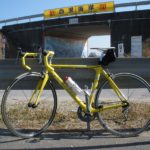
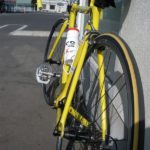
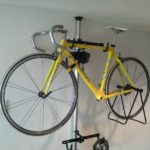
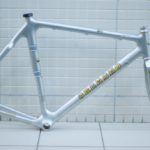

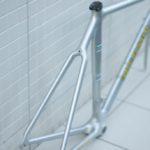

There is a 3rensho carbon bike for sale locally here in Vietnam. It appears to be a very close match to the one at the top of this article
Hi Robbie! I’m very curious about the flow of vintage Japanese bikes to Southeast Asian countries. They seem to pop up frequently in the Philippines, Vietnam, Singapore, Malaysia and Indonesia. How do they all get there?
Hi Robbie, Is that bike in Vietnam still available? I’d like to buy it.
One of the first employees at Aegis was a Vietnam Veteran so I wonder if there was some connection there.
The “flow” of vintage Japanese bikes to Southeast Asia (i.e. Vietnam, Philippines, Malaysia, and Indonesia) has more to do with the preponderance of counterfeit Japanese bikes in those countries.